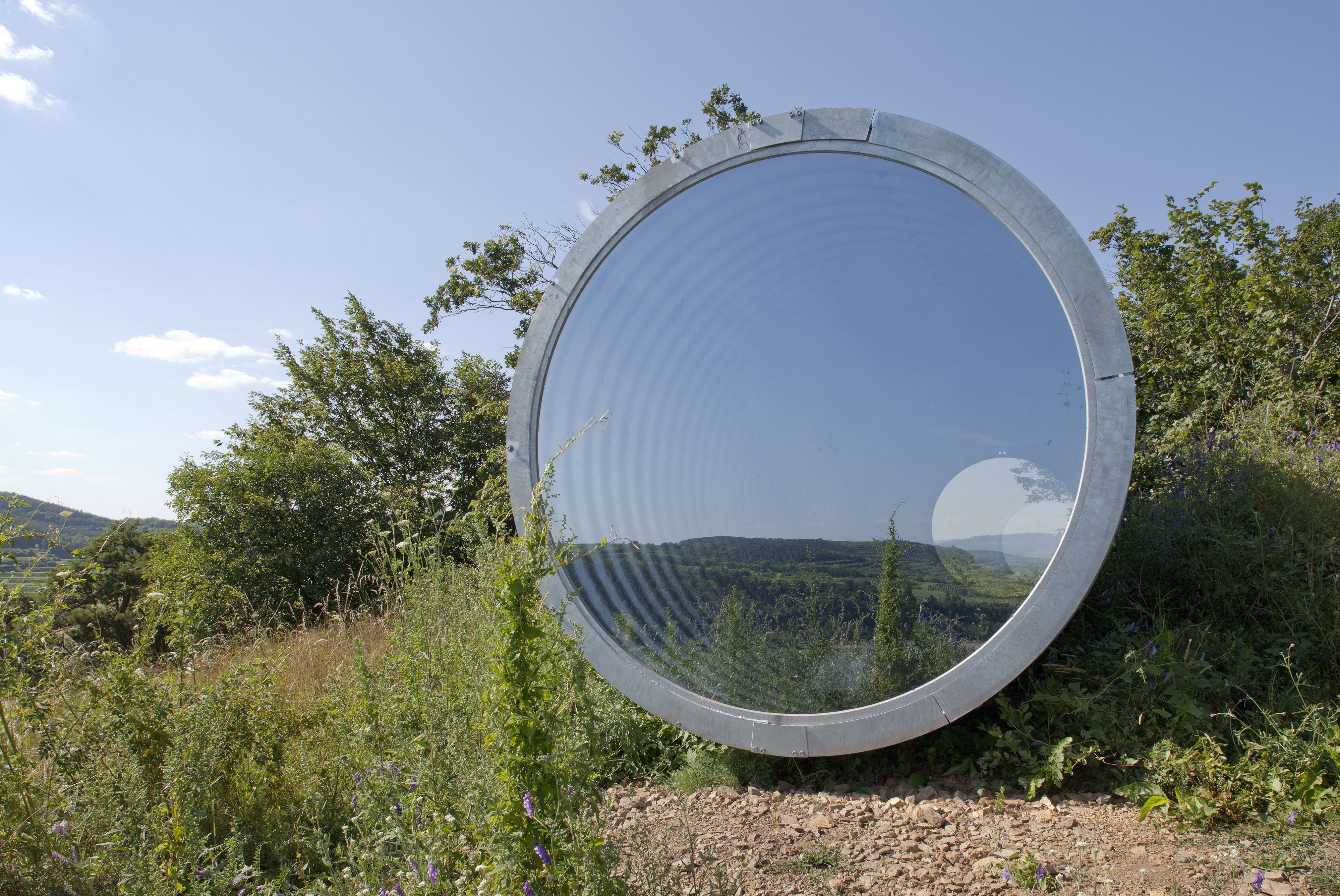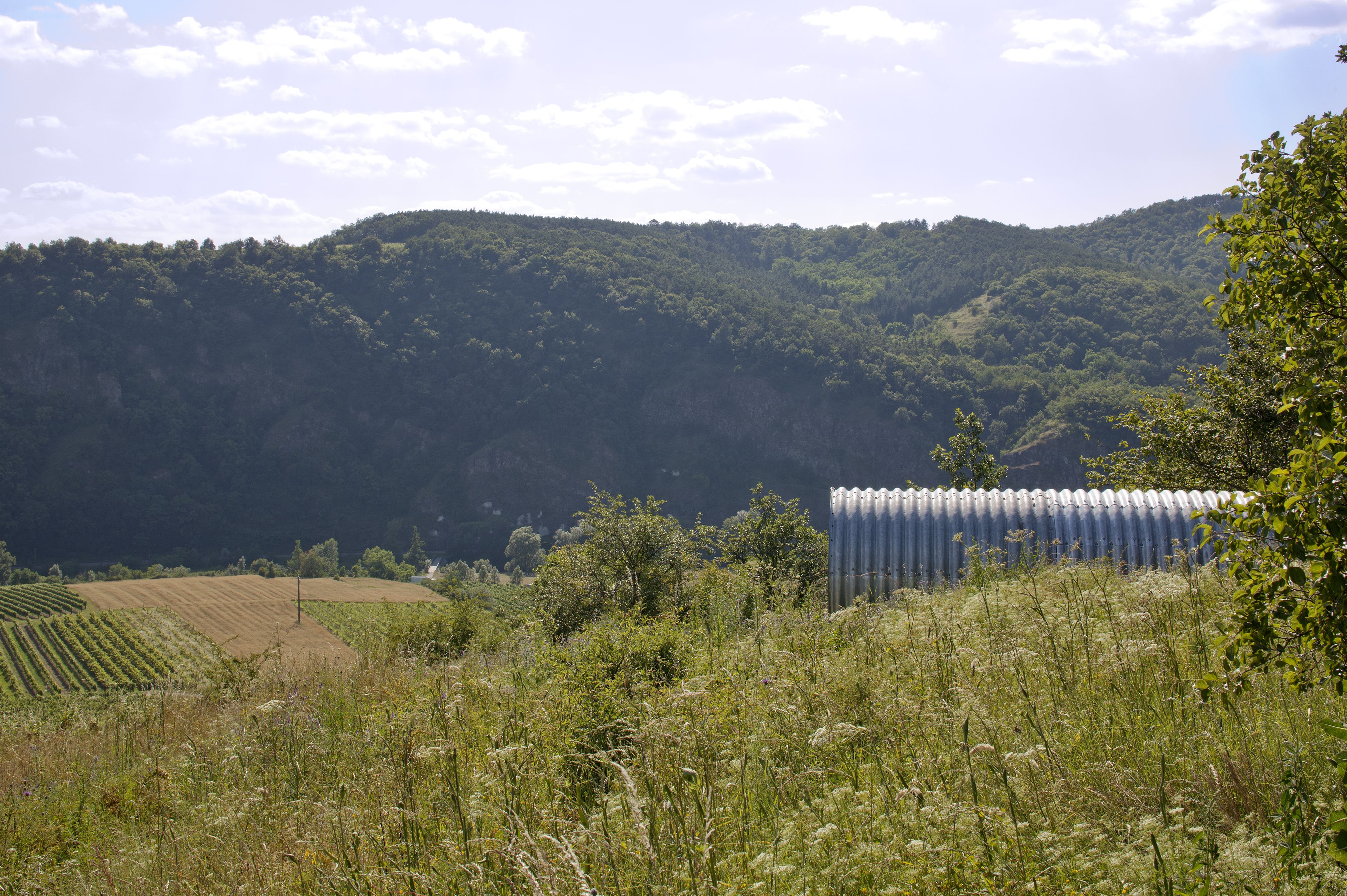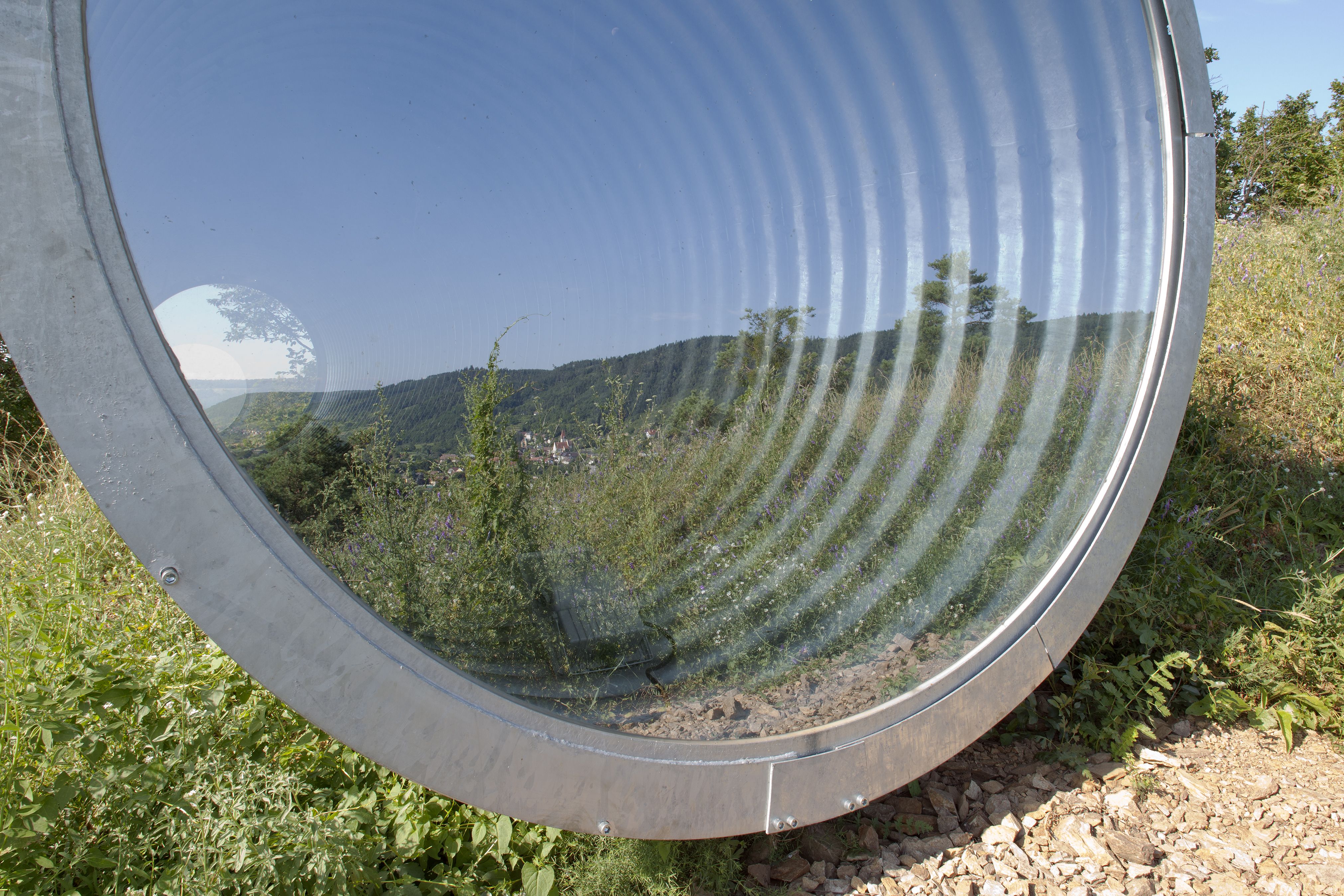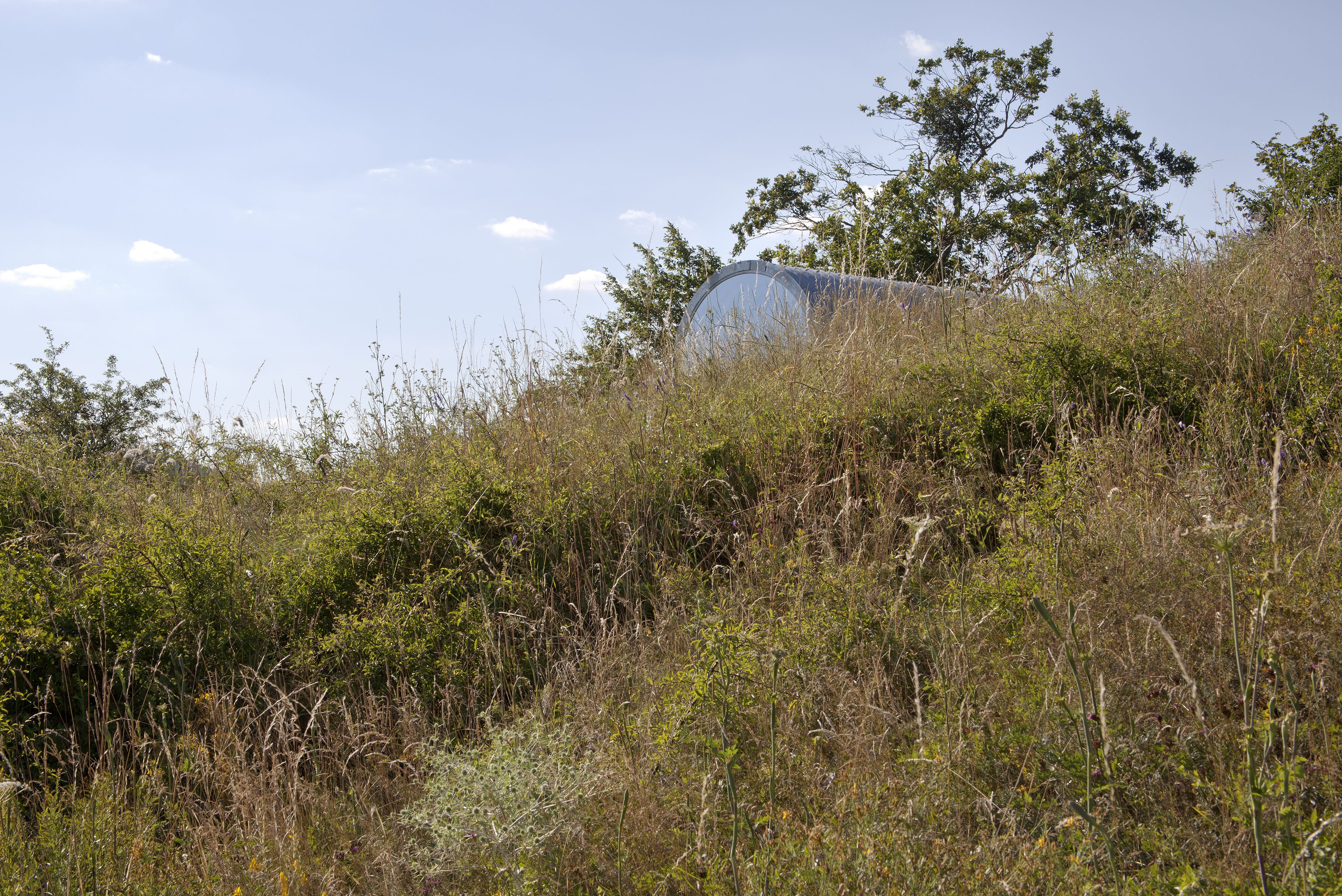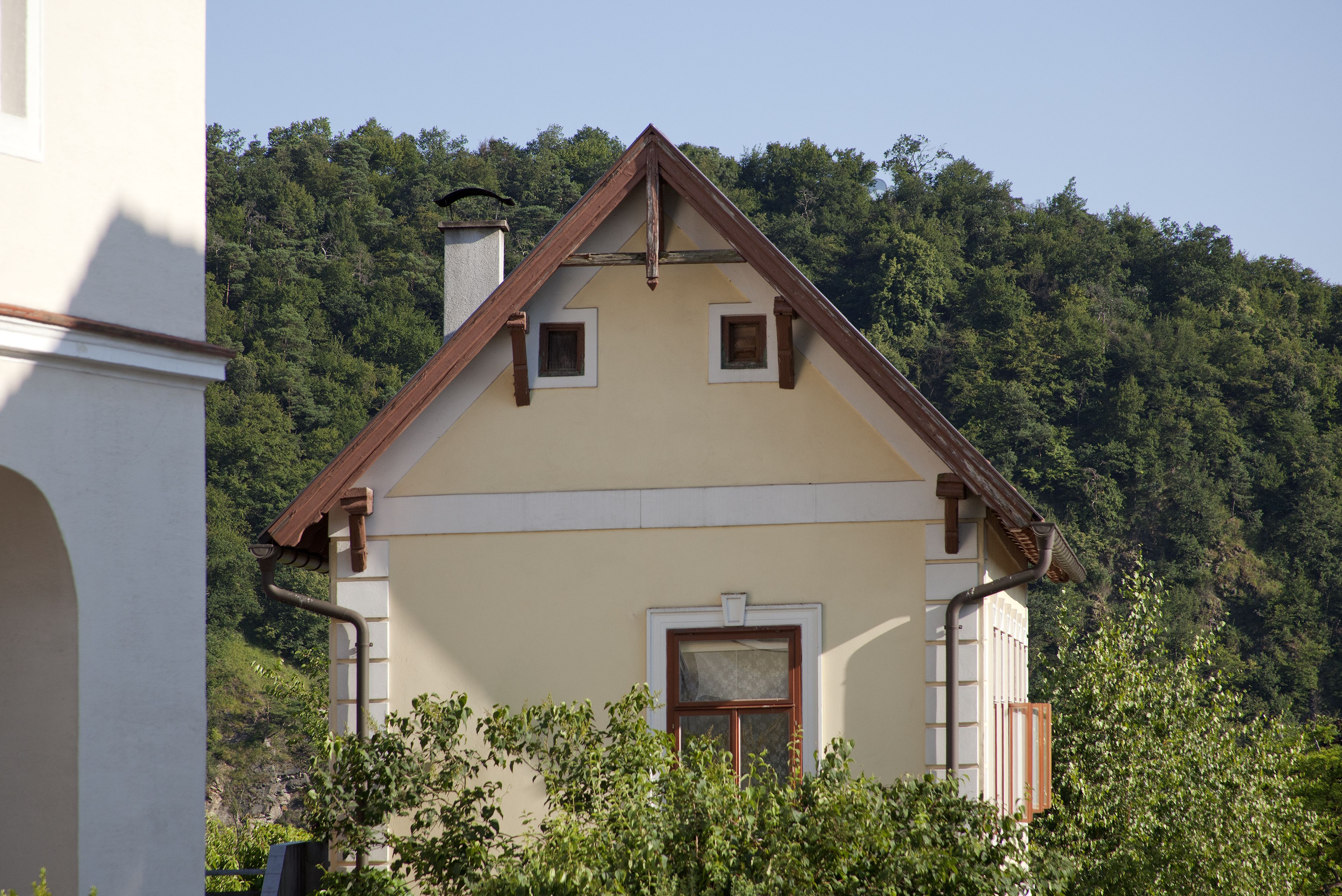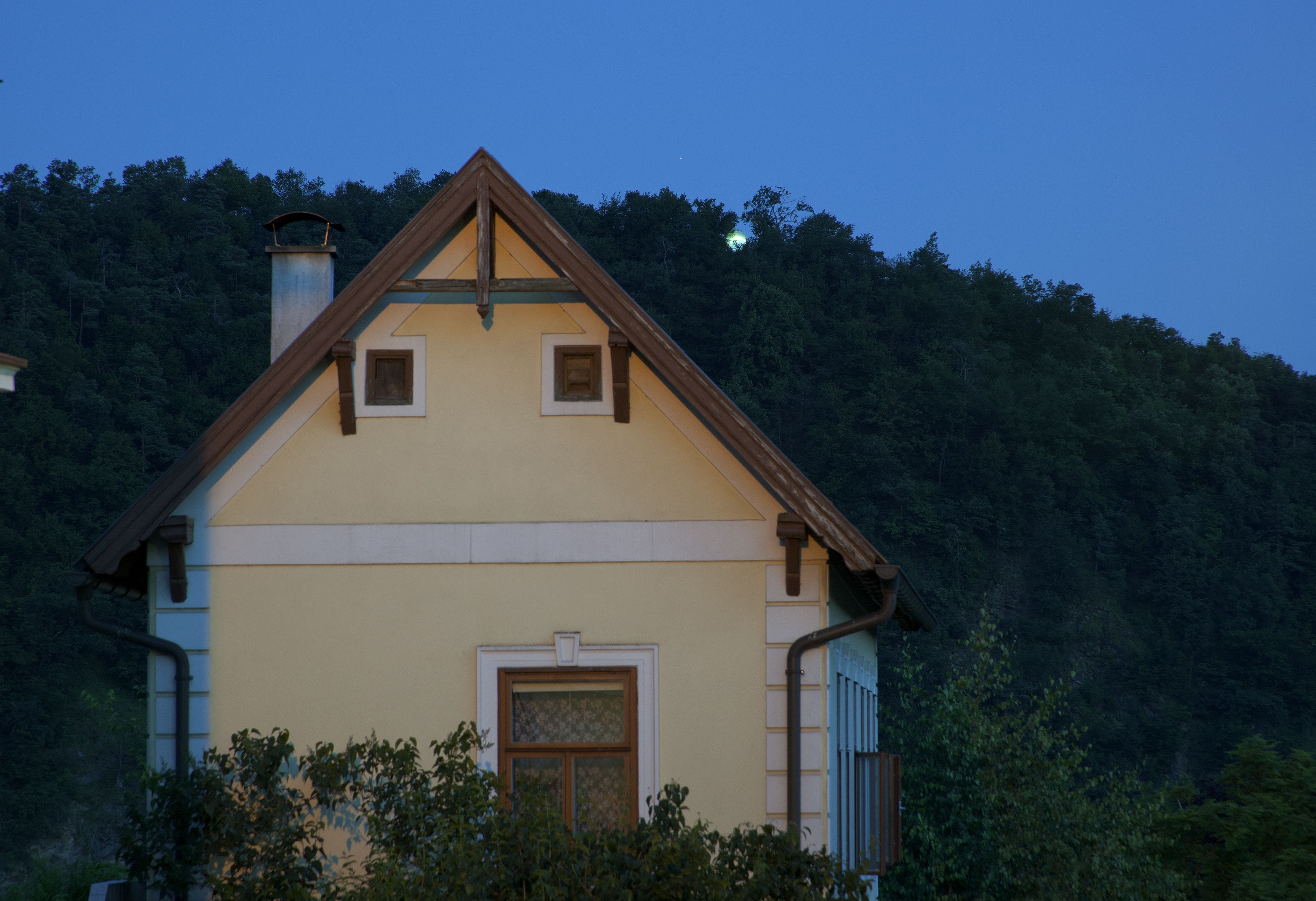Herbert Golser
:
Mondrohr
Back
Information
The Mondrohr (Moon Pipe) is located on the "Kavalrienberg" between Schönberg and Stiefern (a "Kavalrienberg" being one of the countless hills referred to as "Mount Cavalry" in Austria, where the Stations of the Cross are mapped onto the landscape) . This artwork combines the qualities of an oversized telescope and a light source. It is visible from both towns, especially at night when, after dusk, it appears like a full moon that can be seen for miles around. During the day we can look through the corrugated steel pipe from both sides.
This seemingly simple idea is based on a more complex concept. The corrugated pipe is made of galvanized steel and is 12 meters long with a radius of 1.25 meters. It looks like the kind of pipe normally used in road construction in underpasses or culverts. It lies perpendicular to the ridge of the hill, connecting its northern slope, which descends steeply to Stiefern, with the southern slope that leads to Schönberg. The pipe is sealed off on both sides with safety glass. A timer is triggered by certain light conditions. At dusk, the light in the pipe turns on, and at midnight it turns off again. The interior of the pipe serves as a reflector, creating a homogenous light that resembles the moon at night. After Herbert Golser was commissioned to design this artwork for the hill between the two towns, it took a few years before he was finally able to finish it. During this time, he devoted himself to careful examination of the topography and the environment, researching environmental protection issues and the actual production of the work. The commissioners of the artwork wanted it to be visible as an artistic intervention from both Schönberg and Stiefern, if possible. After observing the landscape in all four seasons, he knew how the trees looked with and without foliage, and he therefore knew how high an object had to be above the tree line in order to be seen from both villages. He did not like the idea of creating a massive vertical structure in nature. Instead, he wanted to create something non-hierarchical that would blend into nature.
It comes as no surprise that this beautiful landscape is where two Stations of the Cross paths were laid in the eighteenth century. Each one starts at one of the villages and meets the other at the top of the hill. Historically speaking, this hill thus stands both for the separation and connection of the two villages. Through his contemporary artistic intervention, Golser’s work renews their connection and overcomes the physical separation by breaching the tree line at a befitting spot, making different ways of seeing possible. If we look north through the pipe from the southern side, it is also possible to see our reflection with the landscape as a backdrop. Depending on where we are standing, the images of Stiefern, Schönberg, and our own reflection overlap, transcending our perception of reality. Herbert Golser creates sculptures and objects out of wood and metal that he places in natural landscapes. These works are products of the artist’s intense investigation of nature and its conditions. By incorporating human interaction into his works, which are in turn integrated into the landscape, he enables us to experience new ways of perceiving nature while creating a poetic sign.(Cornelia Offergeld)
Images (6)
